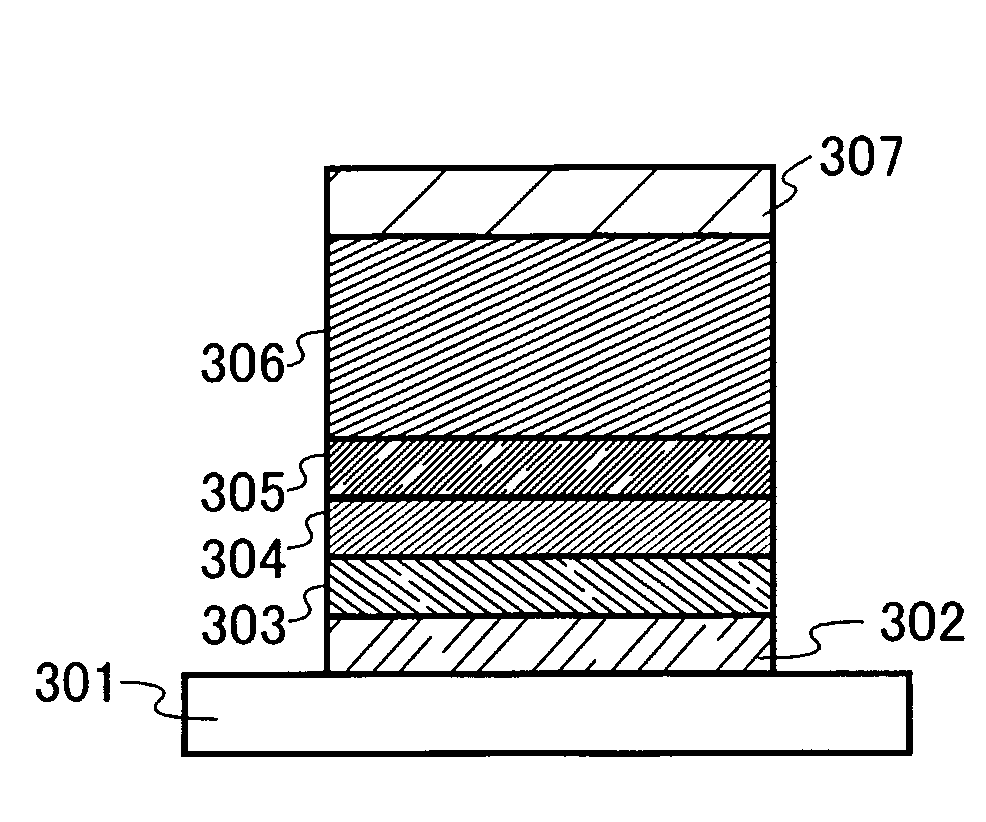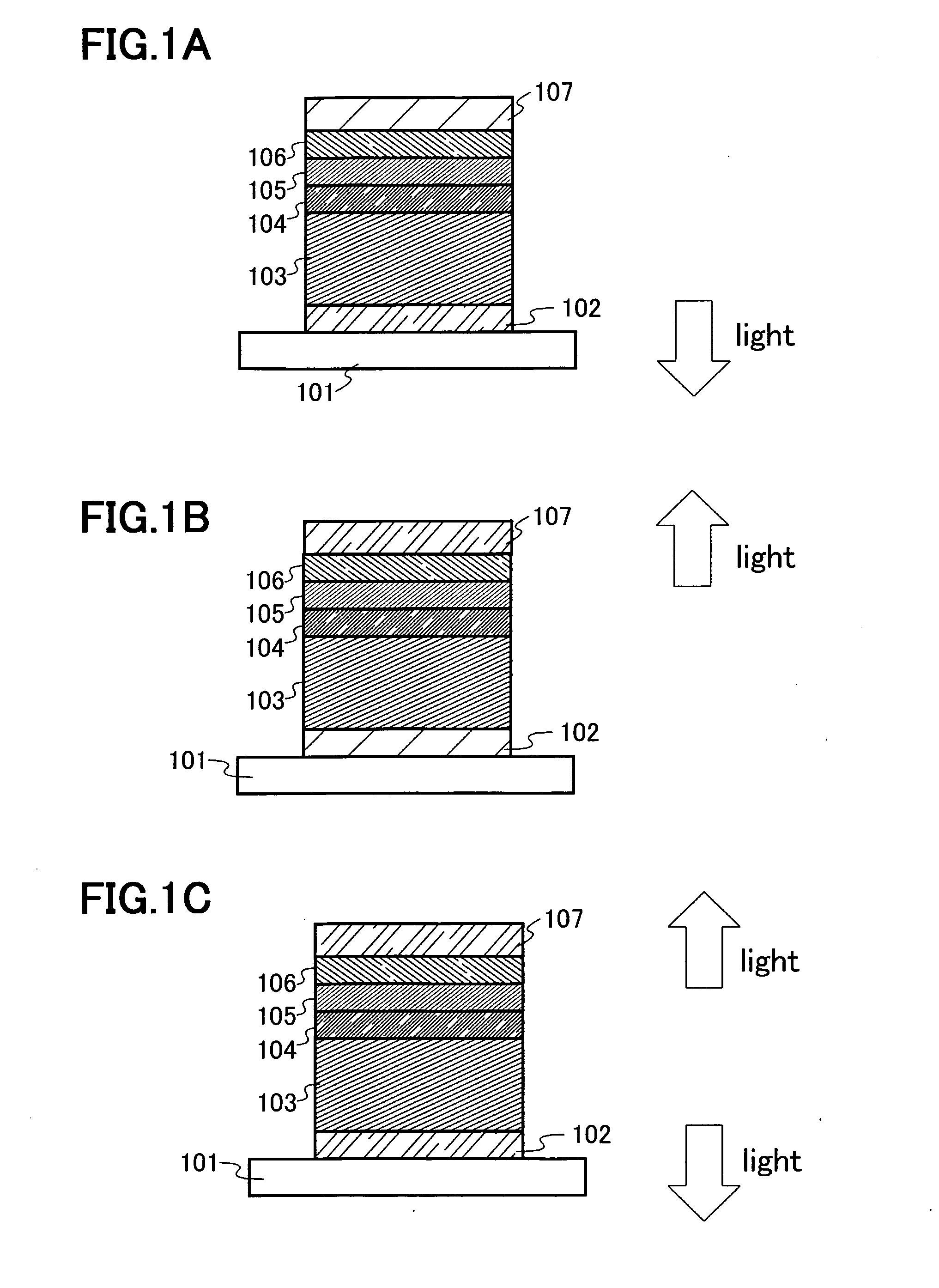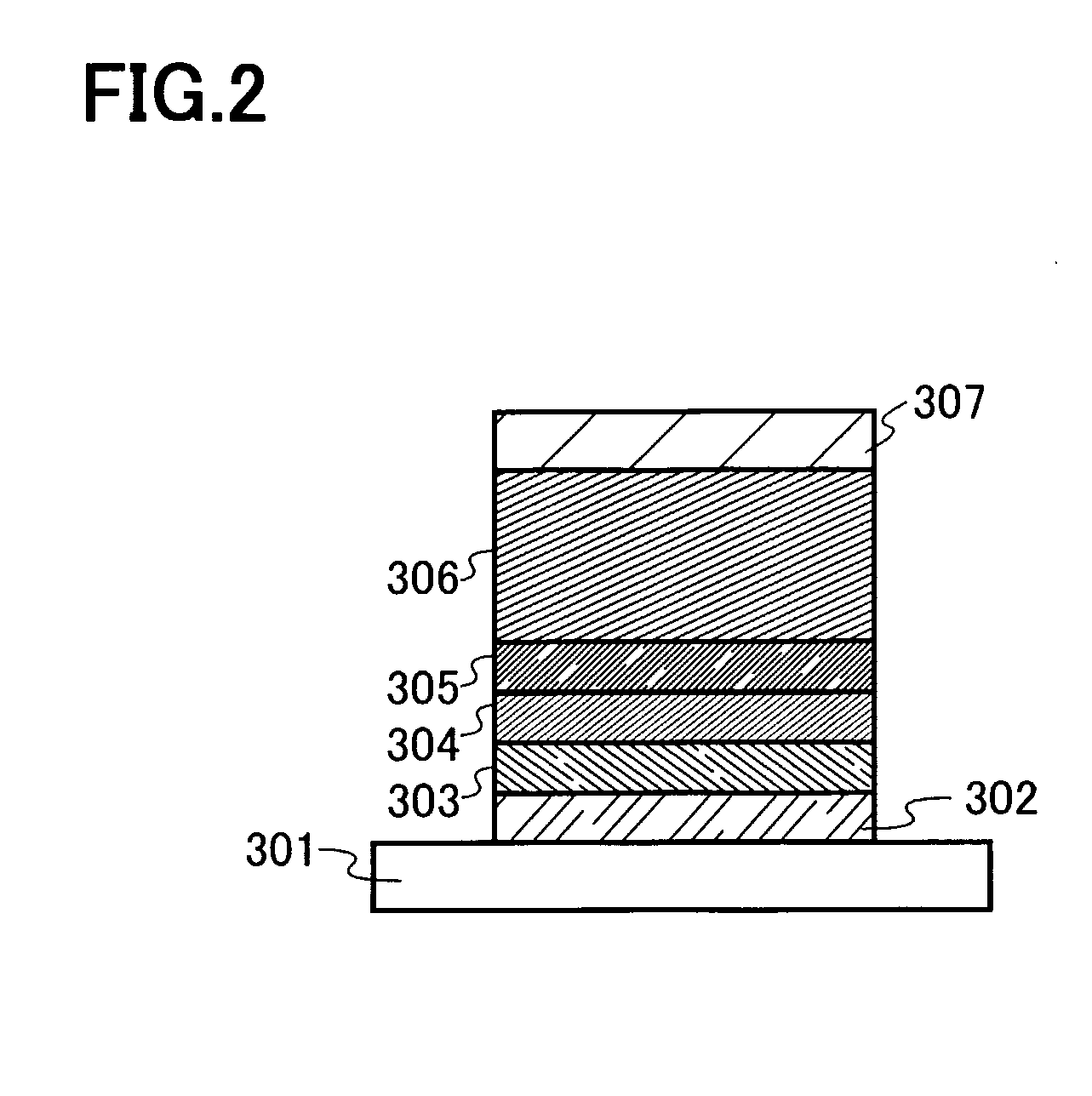Light-emitting element, light-emitting device, and vapor deposition apparatus
a technology of light-emitting devices and vapor deposition apparatus, which is applied in the direction of organic semiconductor devices, discharge tubes/lamp details, discharge tubes luminescnet screens, etc., and can solve problems such as difficulty in changing electrical characteristics without changing optical characteristics
- Summary
- Abstract
- Description
- Claims
- Application Information
AI Technical Summary
Benefits of technology
Problems solved by technology
Method used
Image
Examples
embodiment mode 1
[0060]In this embodiment mode, description is made on a layer containing a composite material which is included in the light-emitting element of the invention.
[0061]The layer containing a composite material includes an organic compound and an inorganic compound, and the concentration ratio of the organic compound to the inorganic compound changes periodically. Since the concentration ratio of the organic compound to the inorganic compound changes periodically, conductivity in a stacked direction (also called a thickness direction) can be controlled. The “stacked direction” in this specification means a direction in one electrode of electrodes at the both side of the layer containing the composite material from the other electrode of the electrodes.
[0062]By changing the length of a cycle in which the concentration ratio of the organic compound to the inorganic compound changes periodically, a layer having desired conductivity can be obtained. For example, conductivity in the stacked ...
embodiment mode 2
[0085]Description is made with reference to FIG. 20 to FIG. 23 on a vapor deposition apparatus used for carrying out the invention, and a method for forming a layer containing a composite material by using the vapor deposition apparatus.
[0086]A vapor deposition apparatus used for carrying out the invention is provided with a processing chamber 1001 where vapor deposition is performed with respect to an object to be processed, and a transfer chamber 1002. The object to be processed is transferred to the processing chamber 1001 through the transfer chamber 1002. The transfer chamber 1002 is provided with an arm 1003 for transferring the object to be processed (FIG. 23).
[0087]Inside the processing chamber 1001, a holding portion for holding the object to be processed, an evaporation source 1011a for holding a first material, and an evaporation source 1011b for holding a second material are provided as shown in FIG. 20. In FIG. 20, the holding portion for holding the object to be proces...
embodiment mode 3
[0103]A light-emitting element of the invention has a plurality of layers between a pair of electrodes. The plurality of layers are formed by stacking layers each formed of a substance with a high carrier injection property or a high carrier transporting property so that a light-emitting region is provided away from the electrodes, that is, carriers may be recombined in a portion away from the electrodes.
[0104]Description is made below with reference to FIG. 1A on one mode of the light-emitting element of the invention.
[0105]In this embodiment, the light-emitting element is formed by stacking a first electrode 102, a first layer 103, a second layer 104, a third layer 105, a fourth layer 106, and a second electrode 107 in this order. Note that in this embodiment mode, description is made below on the assumption that the first electrode 102 functions as an anode while the second electrode 107 functions as a cathode.
[0106]A substrate 101 is used as a support of the light-emitting eleme...
PUM
| Property | Measurement | Unit |
|---|---|---|
| thickness | aaaaa | aaaaa |
| thickness | aaaaa | aaaaa |
| thickness | aaaaa | aaaaa |
Abstract
Description
Claims
Application Information
 Login to View More
Login to View More - R&D
- Intellectual Property
- Life Sciences
- Materials
- Tech Scout
- Unparalleled Data Quality
- Higher Quality Content
- 60% Fewer Hallucinations
Browse by: Latest US Patents, China's latest patents, Technical Efficacy Thesaurus, Application Domain, Technology Topic, Popular Technical Reports.
© 2025 PatSnap. All rights reserved.Legal|Privacy policy|Modern Slavery Act Transparency Statement|Sitemap|About US| Contact US: help@patsnap.com



